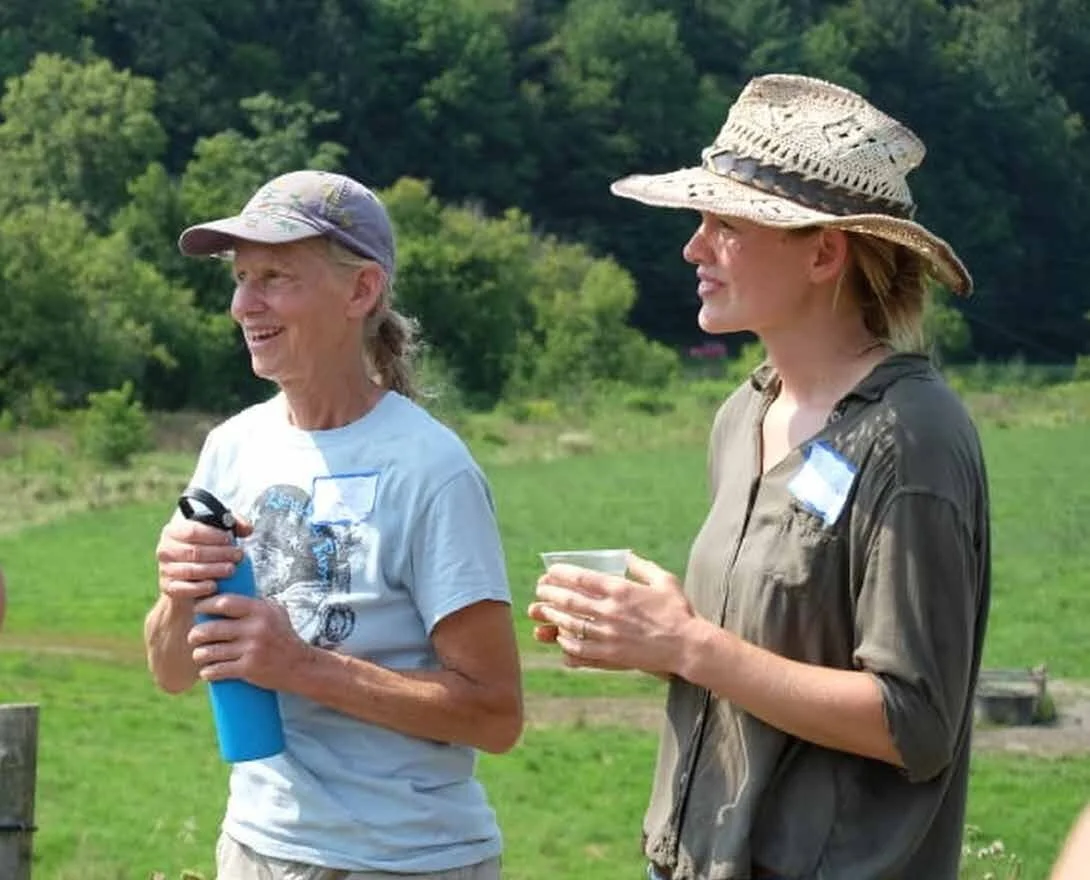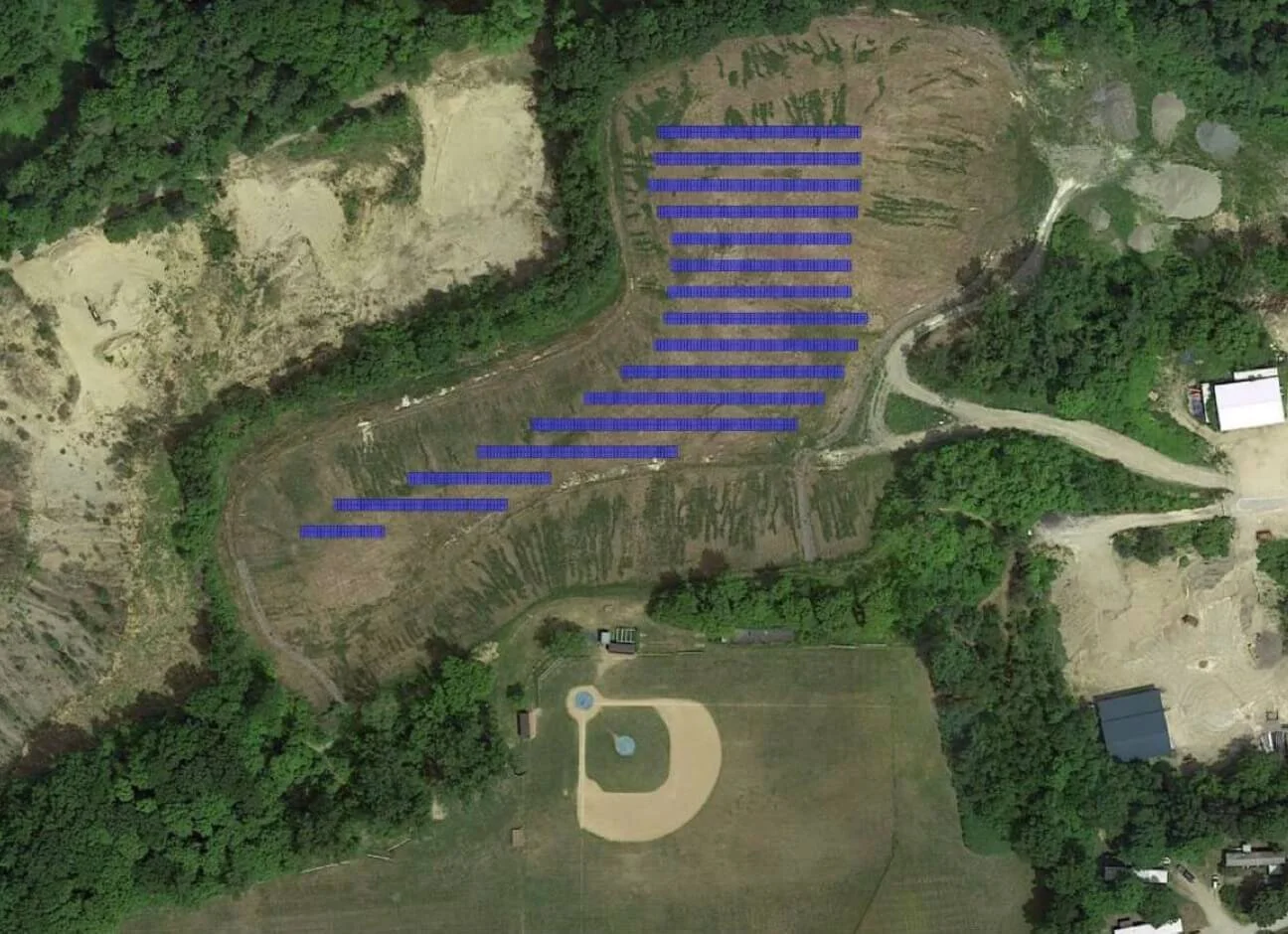Collaborative Offers New Farm Model, Flying Dog Farm Anchors Historic T'bridge Property
Shona Sanford-Long, right, and her mother Suzanne Long speak with visitors at Flying Dog Farm during Saturday’s Open Farm Week event. (Herald / Alex Binzen)
Visitors drove across the 1879 Howe covered bridge into a celebratory community event on the evolving farm land of the White River Land Collaborative on Sunday as part of Open Farm week in Vermont.
The Holstein stock farm was sold last year to the Land Collaborative, a nonprofit which formed as a way to continue farming on a historic property that no single farmer could afford to purchase. The Vermont Land Trust stepped in to purchase the property, but will sell to the Land Collaborative in the next five years.
The Land Collaborative began when the farm went up for sale. Shona Sanford-Long, the daughter of Luna Bleu Farm’s Suzanne Long, needed farmland. While the property was too expensive at over $700,000, its value to the culture, history, and community of Tunbridge pushed a small group, including Sanford-Long and Long, Fran Miller, and Emily Boles, to look for solutions to making the farm affordable.
The result was the White River Land Collaborative, a unique model of transforming dairy farmland into a community hub that will be home to multiple agricultural enterprises, solar energy generation, and community involvement.
Sanford-Long is the “anchor tenant” for the new project, having moved into the property on June 15, bringing her cattle, sheep, and pigs. She is the owner of Flying Dog Farm.
Sunday’s gathering fêted the new vision for the land, and was filled with a variety of events around the farm. Turnout exceeded expectations with the parking area overflowing, despite the blazing heat.
Musicians strummed along on guitars, banjos, and violins. Later in the day a circle of a dozen musicians formed in the shade of the barn. First Branch Coffee served coffee and sweets, while Moon and Stars farm sold arepas and empanadas. Emily Boles and her family demonstrated Abenaki basket weaving.
An outside wall of the main barn was dedicated to the history of the farm. There were tents for a variety of different organizations, including the reimagined South Royalton Community Garden, Royalton Community Radio, Vital Communities, and the farmer advocacy group Rural Vermont.
There were a number of scheduled talks as well. Emily Boles spoke about Abenaki history and practices, emphasizing the mutual relationships between Abenaki and Vermont farmers in the past, including on the property.
“Many Vermont traditions are Abenaki traditions, like maple sugaring,” said Boles. Boles is the Abenaki advisor for the collaborative, and is planning to integrate native species and agroforestry into the 140 acres of forest on the property, which are currently a uniform pine plantation.
Rudi Ruddell led a tour of the bank stabilization planting done on the property along the first branch of the White River, which he has been involved in as a watershed scientist for the White River Partnership. He is also on the advisory board for the land collaborative.
Sanford-Long gave a tour of Flying Dog Farm. Although the heat kept walks short, the large barn was open for visitors to explore. The land collaborative has a long-term goal of turning the barn into a community space for music, shows, and other events. Because the land will be owned by the land collaborative and leased to the farms, it gives farmers assurance in the long-term stability of the property, said Sanford-Long.
With 204 acres of farm and woodland, the property will likely support multiple small farms in the coming years.
The land was originally owned by the Howe family, who farmed it in the early 1900s. While most of the structures had to be rebuilt after a fire, including two colossal barns, one barn built in 1918 still stands.
The White River Land Collaborative is legally supported by the Alliance for Vermont Communities (AVC) through what’s known as a fiscal sponsorship as the collaborative develops.
AVC was formed to stop developer David Hall from purchasing thousands of acres in the valley in 2018. As part of its efforts, the group purchased 256 acres of land on the Sharon and Strafford boundary to thwart his efforts, which they are now giving back to the towns as the Ashley Community Forest, explained Micheal Sacca, president of the AVC.
To determine the best use for AVC’s land, the Vermont Land Council on Rural Development got involved asking what the towns needed, and what their goals were. The goals were clear: support agriculture, and make the region affordable for young people. The AVC has now shifted into a new mission statement that involves supporting the goals of the local towns and the Land Collaborative.
The new organization aims to allow affordable small-scale farming and community integration in the region.
“There aren’t a lot of existing models; we’re gonna be creating things as we go,” said Ruddell speaking about the idea of a nonprofit owning the land, and leasing to multiple individual farmers.







